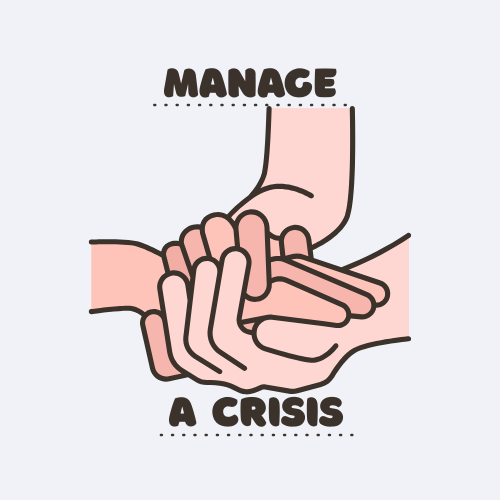
Manage a Suicidal Crisis
A commonly used and effective tool in helping to prevent suicide is a crisis response plan or safety plan.
The plan is a pre-prepared list of strategies and support options to assist before or during a mental health crisis, where behaviours or thoughts may become suicidal.
Safety plans are generally made up of 6 components or parts.
1️⃣ WARNING SIGNS
Thoughts, feelings, behaviours or symptoms that you recognise as being a sign of crisis or distress. These signs would signal that is it time to put your safety plan into use.
2️⃣ COPING STRATEGIES
These strategies can help de-escalate and bring back some calm. These might include breathing exercises, relaxation techniques, visualisation, taking a walk or a shower.
Not all situations will be suitable for some strategies, so consider how accessible they might be.
3️⃣ SOCIAL SUPPORTS
Identify safe, social, spaces you can visit, that can distract you from unsafe thoughts and feelings. List a few options, for different times of day.
4️⃣ FAMILY & FRIENDS
Make a list of family and friends you know you can contact when you are feeling distressed or suicidal. When you contact them, let them know you are in crisis.
To ensure they can provide the right assistance at the right time, let them know in advance that you are including them in your safety plan and make sure they are willing to help.
5️⃣ PROFESSIONALS & AGENCIES
Create a list of local mental health professionals and other health care providers you're familiar with. National suicide prevention and mental health hotline numbers can also be included here.
6️⃣ ENVIRONMENT
Develop a plan to limit access to anything within your environment that could harm you. This might include locking up weapons and giving the key to a trusted friend or disposing of medications that you no longer use.
Identify a safe space to sit or lie down and use some of your coping strategies.
After you have developed your plan, and shared it with someone you trust, the key step is to use it whenever you find yourself becoming distressed or suicidal.
If you feel suicidal to the extent you don’t feel in control of your behavior, seek professional help immediately.
